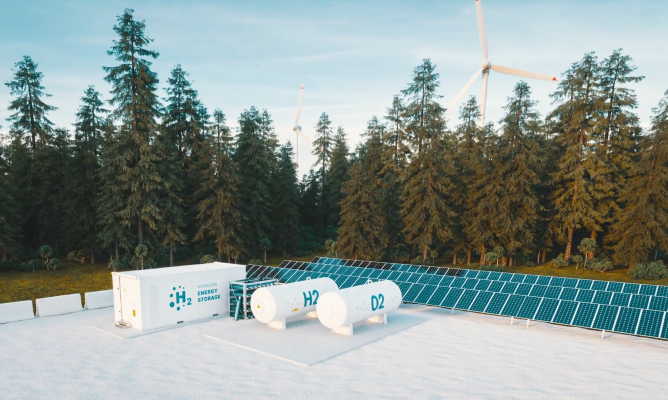
What is and how is green hydrogen produced?
Hydrogen is one of the main sources of renewable energy and the most abundant element in the universe. However, because it cannot be extracted directly from nature, it must be produced.
The most common production method for producing green hydrogen is from water electrolysis, which consists of separating oxygen and hydrogen molecules using renewably sourced electricity, a process that does not generate CO2 emissions and thus results in green or renewable hydrogen.
Another way to produce hydrogen is through steam reforming of methane (natural gas), which consists of reacting methane, which also contains hydrogen, with water vapor at high pressure and temperature. This is currently the most widely used method for producing gray hydrogen, but green hydrogen can be obtained by replacing natural gas with biomethane from organic waste.
Uses of green hydrogen
Green hydrogen, in addition to being used directly for mobility or in the production processes of different industries, either as an energy source or as a raw material, can also be used to produce by-products such as ammonia or methanol, which will be key to the decarbonization of maritime transport and some industrial sectors. CTA: Find out more about ammonia and methanol.
Find out more about ammonia and methanolarrow_right_alt
Green hydrogen at Moeve
Together with our allies, we are building the 'Andalusian Green Hydrogen Valley', the largest green hydrogen project presented in Europe, which will accelerate decarbonization and achieve greater energy independence for the continent.
What are the advantages of using green hydrogen?
-
Sustainable energy: green hydrogen generates no polluting emissions; the only thing it generates in its combustion is water vapor.
-
Ability to be stored: as a pressurized gas or in the form of green ammonia or methanol as well as other by-products. In addition, it is a less expensive option for storing electricity from renewable energies than using batteries.
-
Ease of management and transportation: infrastructures and processes that are now used for natural gas can be utilized. In addition, it is a solution for both storage and transport to other regions where there are no renewable resources.
This is how we are moving forward
A way to go
We still have a long way to go, but we have a clear commitment to transform our business from fossil fuels to sustainable energy and mobility.


